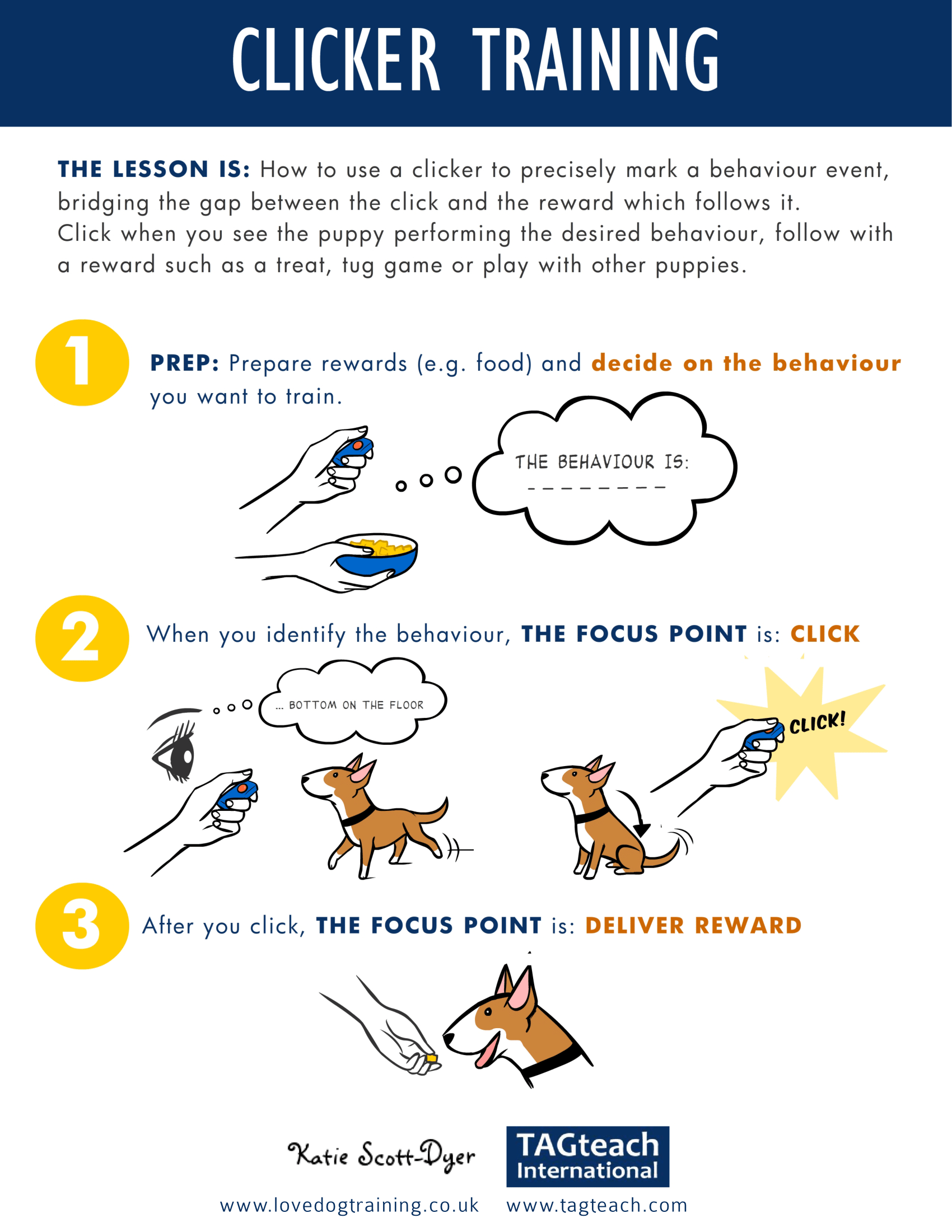Clicker Training
Getting started
Getting started with clicker training is easy, provided you follow a few simple rules. The clicker itself is a small gadget that emits a unique sound in the environment, which is what makes it effective as a learning tool. It doesn't betray handler emotion and can be used to capture fleeting movements that a verbal marker may be too slow for. The mark acts as a bridge between the click and the reward that follows, this buys you time to fumble in the pocket for a treat and your dog knows what he got paid because he heard the click already! Studies have shown that the dopamine hit in the brain can be more reinforcing than the reward itself, the anticipation of getting something desirable is more powerful!
Check out this video on the science behind dopamine hits -

What’s next Katie?
The clicker needs to be conditioned to have a meaningful prediction to your dog. So a few pairings of click followed by good stuff soon gets your dog associating the sound of the clicker, predicting the good stuff coming. You can then use the clicker to mark desired behaviour. Pair it with good stuff, food is an especially potent tool to use in training, all dogs are motivated by food (they all need feeding, right!) but some may prefer to work for toys, or for affection or the chance to dive into a river, whatever floats their boat use these as reinforcers as paychecks.
Break down the learning into small, easy chunks, which makes teaching and learning more efficient, TAGteach excels in this:
After a behaviour is learned
Once the behaviour has been learned and proofed (is successful in various locations and scenarios), then you can stop using the clicker, as it will have done it's job. You can fade out its use and continue to pay successful responses. Some people like to use the clicker to get their dogs' attention, and I am O.K. with that, after all it's your dog, your choice, but bear in mind it will loose its value for marking behaviour! I also like to teach students to use a verbal or other marker as well as a clicker, just in case your clicker isn't to hand when you a behaviour you really like!
Troubleshooting
If using a clicker to mark behaviour, then always follow a click with a reinforcer, even if you misclick or you risk devaluing the click. And be careful what you click for, if you want more of that behaviour, click. The information at the time of the click forms a neural pathway in the brain, meaning that what the dog was doing at the time of the click and also what the dog was FEELING forms a permanent pathway. There are certain emotions we don't want ingrained via the neural pathways created when clicker training, such as over excitement, frustration, anger, fear and anxiety. Use a calmer, verbal or visual marker when your dog is expressing these emotions instead.
Also don't use a clicker to mark calm desired behaviours such as settle, as we want to keep the animal in that calm state of mind, the clicker can make them excited. So remember in training; you get what you click for, you get what you pay for and practice makes progress!
Go, grab a bag full of Scooby Snacks, find a willing volunteer to train with be they canine, feline or human and have some fun learning together! Get expert advice before attempting clicker training with equines though, these can be tricky when you don't know what you are doing. Don't think horses can be clicker trained? Heard they get easily frustrated? Get it right from the start! https://www.youtube.com/watch?v=R_V64iUnc6Y
Edit - Rabbits require a lot of interaction and enrichment, as much as a dog would in fact, so why not clicker train them? Check out this fab website for more advice and ideas - http://www.clickerbunny.com/
Liked this one, let me know or share and spread the love and hit subscribe so you get the next episode in your inbox!

